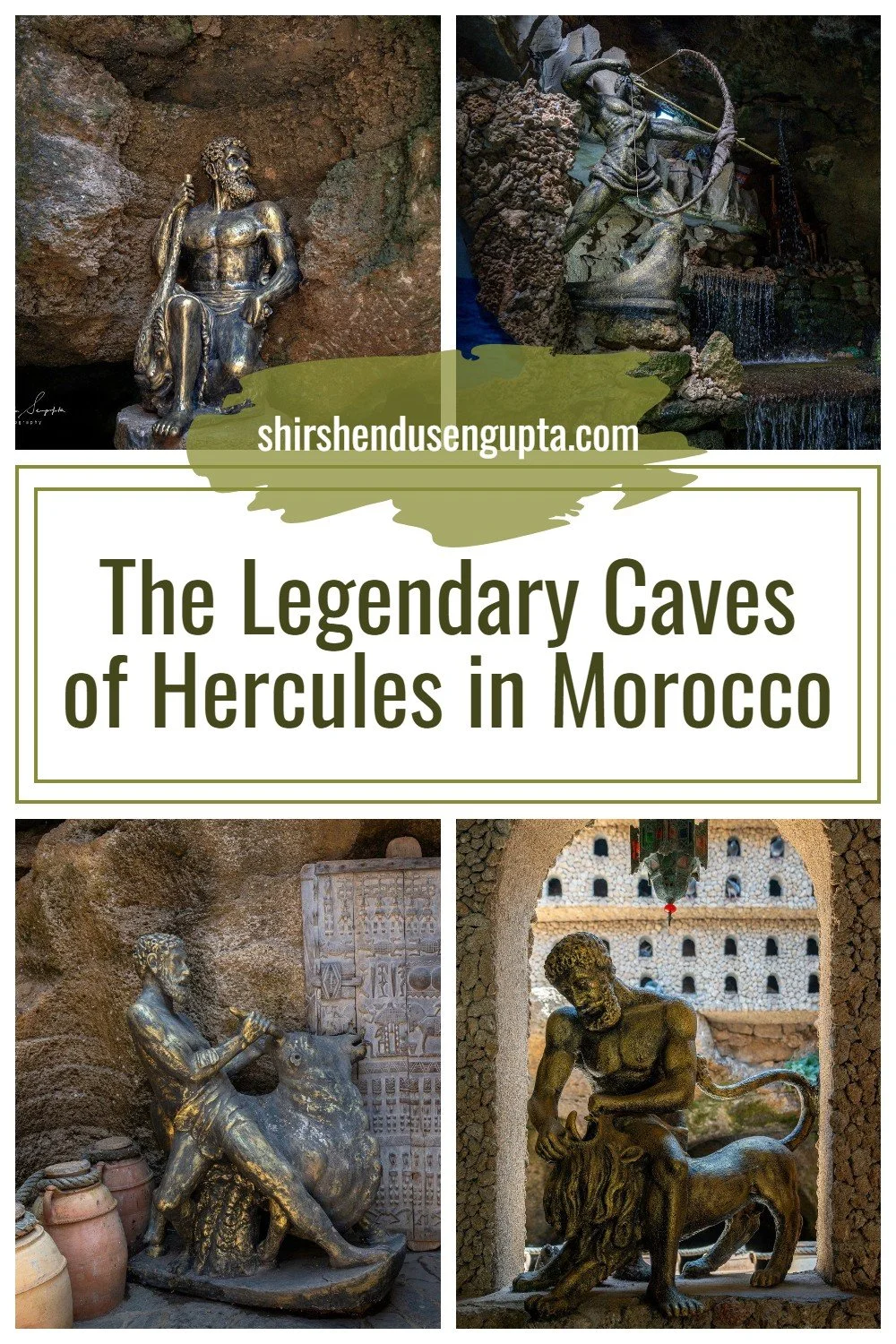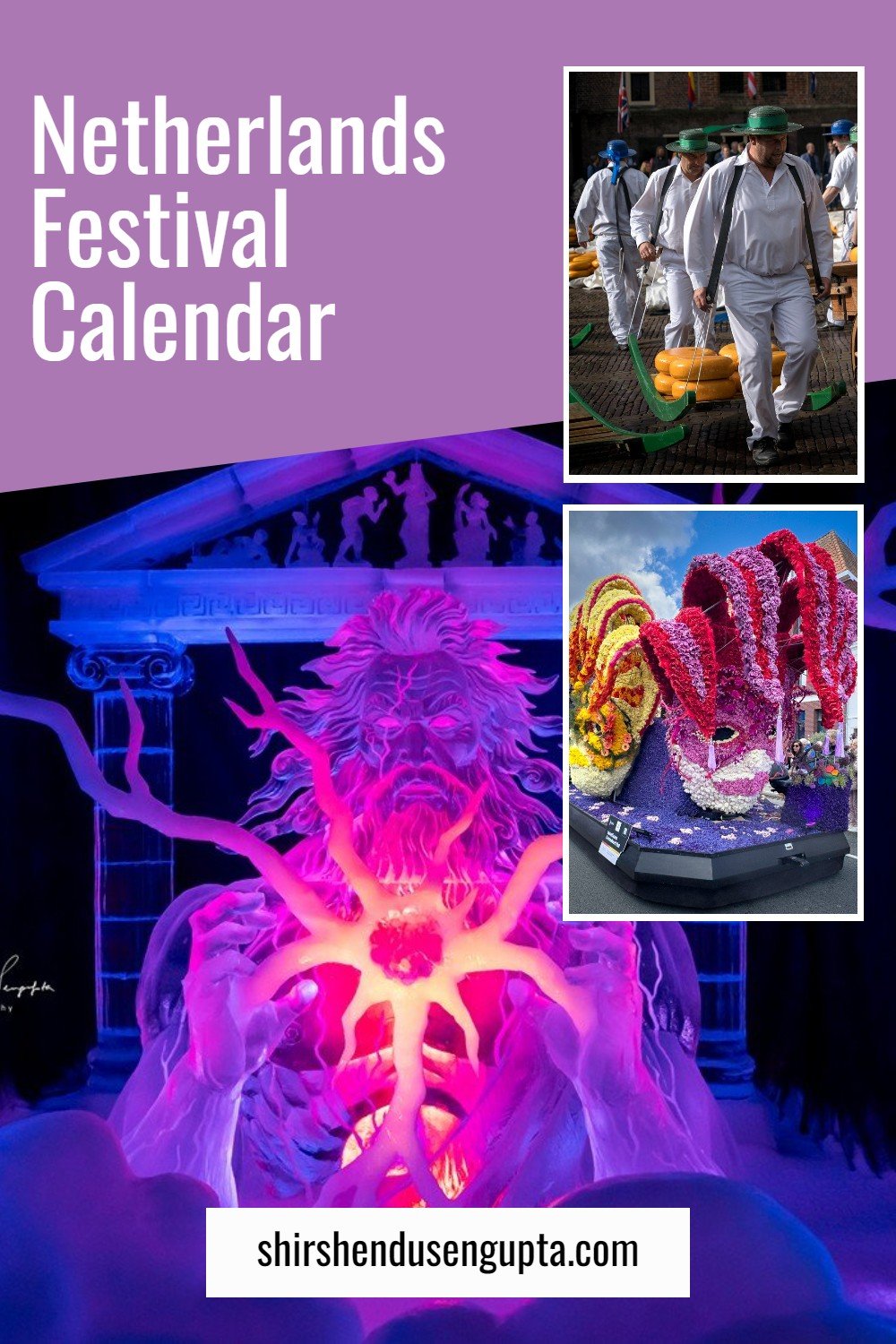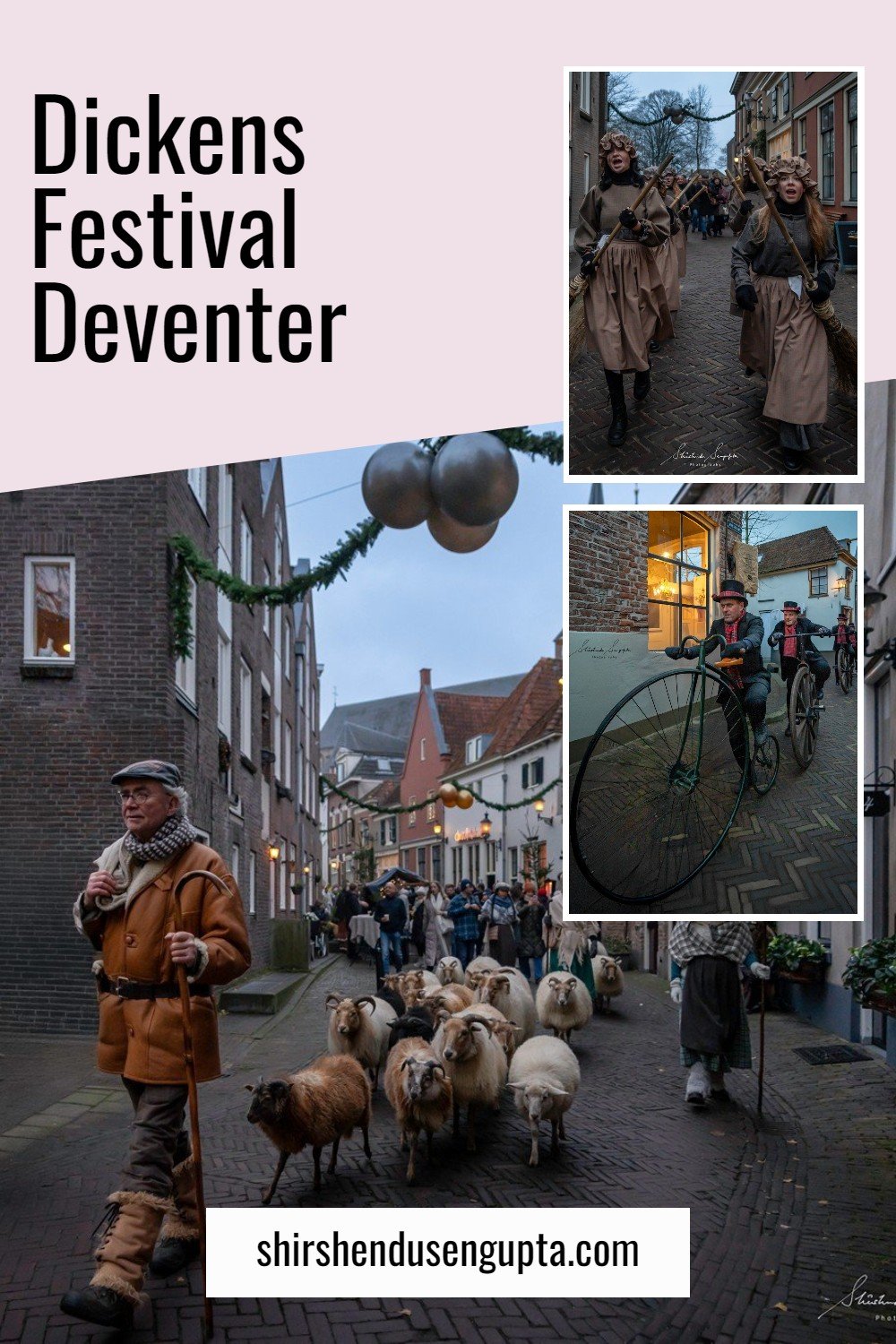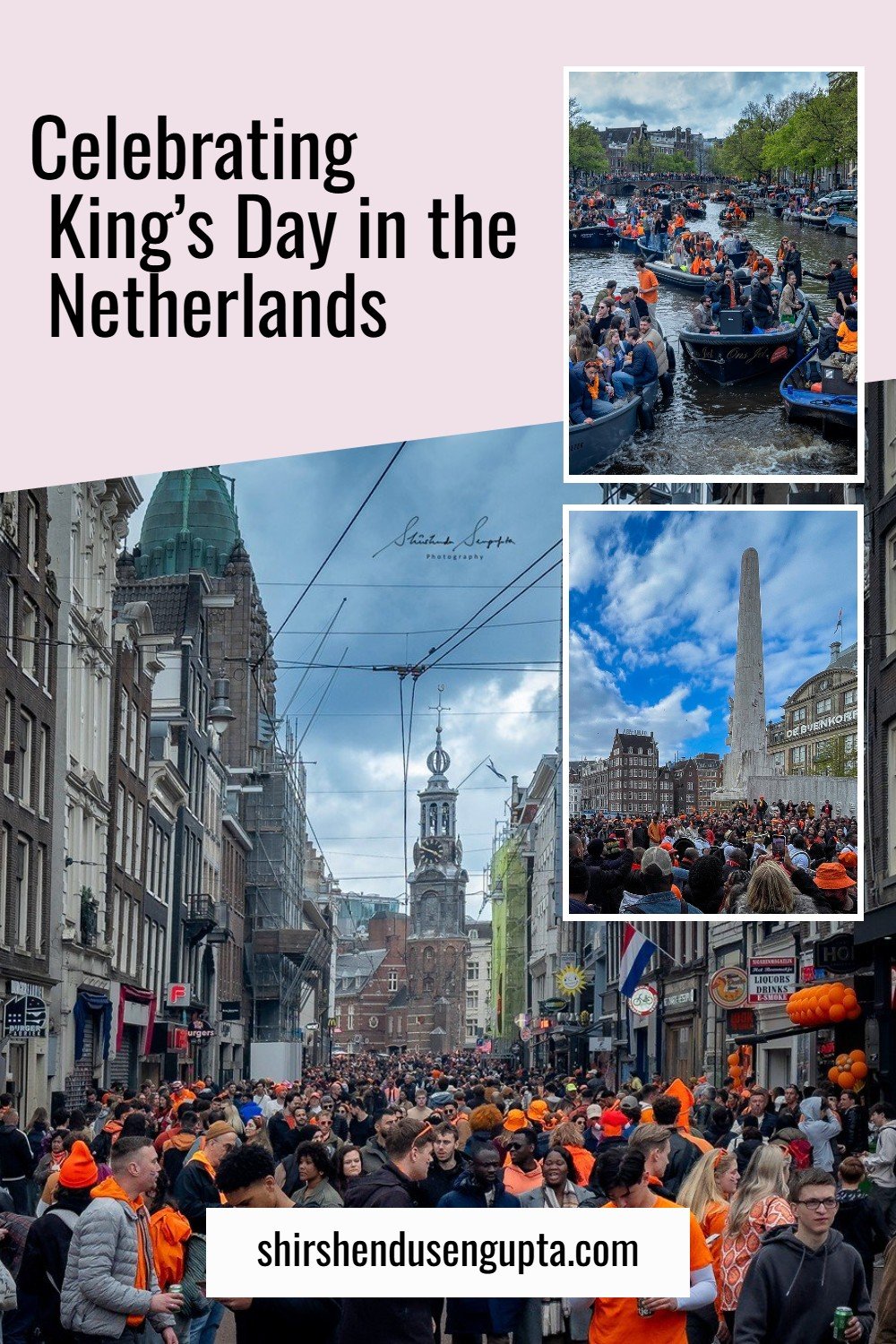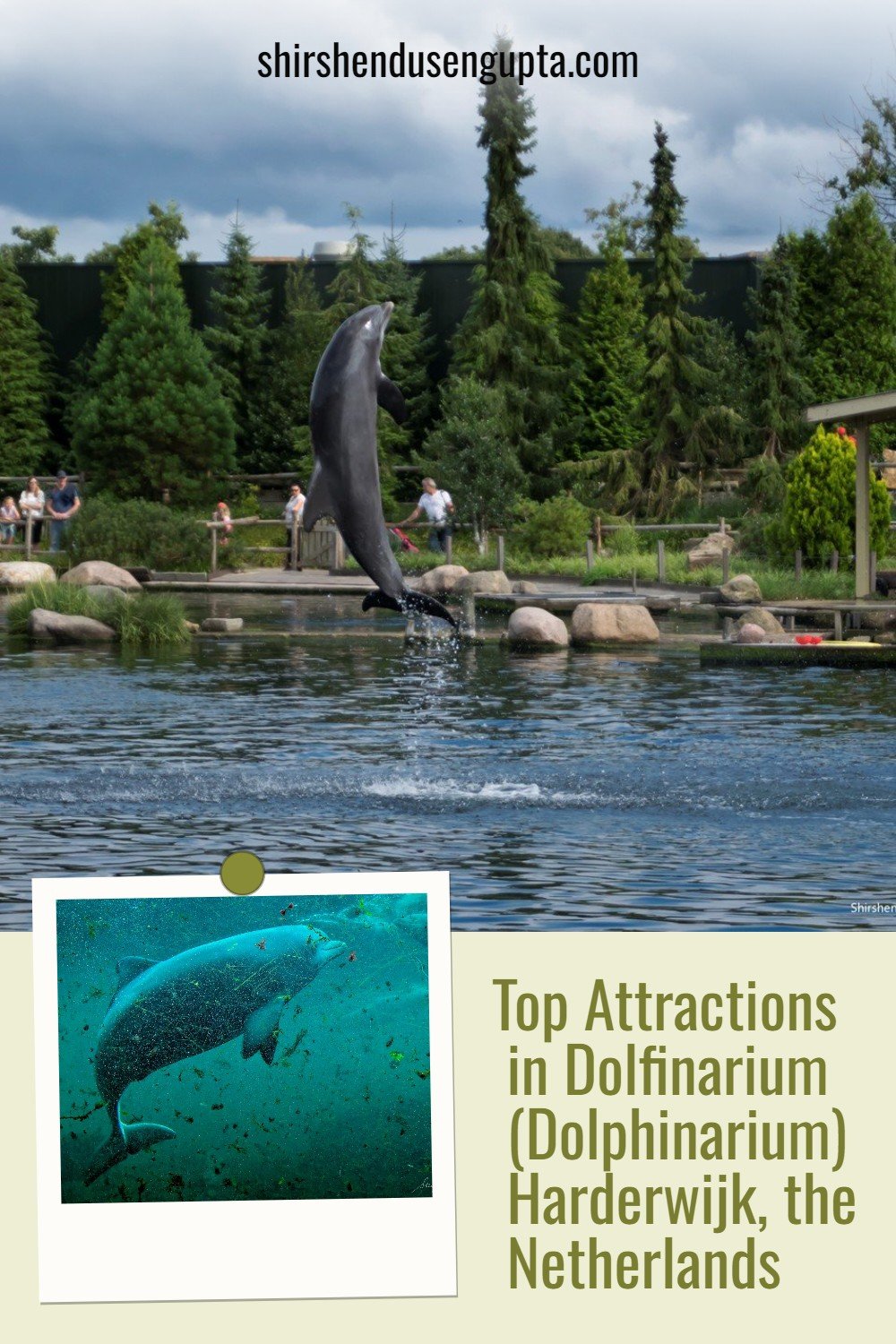The Legendary Caves of Hercules | All You Need to Know Before You Embark on a Mythical Day Trip from Tangier, Morocco
Prologue
During a memorable Easter, we set out on an epic adventure, ‘Where Europe Meets Africa | 7000 km Road Trip from the Netherlands to Morocco through Wine Roads, Holy Sites, and Clifftop Towns of France, Spain, and Gibraltar | Itinerary, Tips, and Tricks’ (blog article coming soon). What started as a casual idea soon unfolded into one of the most memorable experiences of our lifetime. Along the way, we wandered through medieval villages, sipped wine in quiet French vineyards, stood in awe at ancient cathedrals and abbeys, drove along coastal cliffs, and watched the cultures of Europe slowly melt into the soulful rhythms of Morocco.
Amid this incredible journey, we reached the windswept Atlantic coast just outside Tangier, where myth and geology collide in the legendary Caves of Hercules. Here, carved by nature and cloaked in legend, we stepped into a world where the sea roars through stone, and the silhouette of Africa emerges from rock. Today, based on that surreal experience, I invite you to join me as we explore everything you need to know before visiting this iconic and mythical landmark. Let the legend unfold!
Welcome to the Caves of Hercules - A Portal to Myth and Mystery
On the windswept shores of the Atlantic Ocean near Tangier, Morocco, lies a place cloaked in legend and shaped by nature - the Caves of Hercules. With their spectacular cliffside views, mythological intrigue, and unique geological formations, these caves are not merely a tourist attraction; they are a journey through the crossroads of African heritage, Mediterranean folklore, and ancient storytelling.
Whether you are a history enthusiast, a mythology buff, a geology nerd, or a casual traveler seeking coastal beauty, this site has something captivating for you. In this guide, you will explore the origins, myths, cultural importance, and practical tips to plan your visit. So, fasten your sandals; it's time to follow in the footsteps of Hercules himself.
The Legend of Hercules
Hercules, known as Heracles in Greek mythology, is one of the most iconic heroes of the ancient world, celebrated for his superhuman strength, courage, and enduring spirit. He was the son of Zeus, the king of the gods, and Alcmene, a mortal woman. This divine lineage made Hercules a demigod, gifted with immense power but also burdened with intense challenges. From birth, Hercules' life was marked by struggle. Hera, Zeus’s wife, was consumed with jealousy over her husband's infidelity and targeted the child with relentless vengeance. In a fit of divine-induced madness sent by Hera, Hercules tragically killed his wife and children, a deed that shattered him. To atone for this horrific act, the Oracle of Delphi instructed him to serve King Eurystheus, who assigned him the following 12 labors, a series of dangerous and impossible tasks -
Slay the Nemean Lion - A monstrous lion with impenetrable skin. Hercules had to strangle it with his bare hands.
Slay the Lernaean Hydra - A serpent-like creature with multiple heads; when one was cut off, two more would grow back. Hercules slew the Hydra by cutting off its heads and having his nephew Iolaus cauterize the necks to prevent them from regrowing, then buried its immortal head under a boulder.
Capture the Ceryneian Hind - A sacred, swift deer of Artemis with golden antlers. Hercules had to capture it unharmed.
Capture the Erymanthian Boar - A gigantic, wild boar that terrorized the region. Hercules drove it into deep snow to subdue it.
Clean the Augean Stables - Hercules had to clean massive stables housing thousands of cattle in a single day. He rerouted rivers to do it.
Slay the Stymphalian Birds - Man-eating birds with bronze beaks and metallic feathers. Hercules used a rattle to flush them out and shoot them down.
Capture the Cretan Bull - A powerful, rampaging bull from Crete, which Hercules wrestled and brought back alive.
Steal the Mares of Diomedes - Flesh-eating horses belonging to the Thracian king Diomedes. Hercules tamed them by feeding them their master.
Obtain the Girdle of Hippolyta - The magical belt of the Amazon queen. Hercules acquired it after a deadly misunderstanding led to a battle.
Capture the Cattle of Geryon - Hercules traveled to the end of the world (possibly the Strait of Gibraltar) to steal the giant’s red cattle.
Steal the Apples of the Hesperides - Golden apples guarded by nymphs and a dragon. Hercules tricked Atlas into helping him retrieve them.
Capture Cerberus from the Underworld - The three-headed dog guarding the gates of Hades, god of the Underworld. Hercules brought him to the surface using only brute strength.
The Story of the Caves of Hercules
According to legend, Hercules visited North Africa a number of times during some of his labors. It is said that slaying the Nemean Lion (first labor), capturing the Ceryneian Hind (third labor), capturing the Cretan Bull (seventh labor), obtaining the cattle of Geryon (tenth labor), and stealing the Apples of the Hesperides (eleventh labor) took place in North Africa. Among these, it is the tenth and the eleventh labor that led Hercules to the Caves of Hercules in Morocco.
During his tenth labor, which was to retrieve the cattle of Geryon, a fearsome giant, Hercules had to pass through the Atlas Mountains, then thought to be the edge of the known world. Legend has it that instead of scaling the mighty mountain range, Hercules smashed through it with his superhuman strength, creating the Strait of Gibraltar and separating Europe from Africa. The Caves of Hercules are said to be the place where he rested after this heroic act before moving on towards his eleventh labor, i.e., stealing the Apples of the Hesperides.
Hercules and Morocco - The Intersection of Cultures
The Caves of Hercules aren’t just a relic of Greek mythology; it is a testament to Morocco’s cultural syncretism. Moroccan folklore, infused with Berber, Arab, and Roman influences, has embraced Hercules as a symbolic figure. Stories passed down through generations tell of a “giant” who roamed the cliffs, leaving behind mysterious footprints, fissures, and cave markings. In Moroccan tradition, Hercules becomes a bridge between worlds: man and god, Africa and Europe, history and myth. The site is also a metaphor for strength and the unknown, an allegory deeply embedded in the Moroccan coastal identity.
Origins of the Caves - A Natural and Man-Made Wonder
Beyond mythology, the caves hold significant geological interest. Located very close to Cape Spartel, where the Atlantic meets the Mediterranean, the caves are a mix of natural sea-carved formations and human excavation. The ‘Caves of Hercules’ comprises of two main chambers within the same cave complex. The Atlantic-facing section is known as the “sea cave,” shaped by ocean waves crashing into the limestone cliffs over millennia. The second chamber, a man-made cave, was carved out by Berbers who quarried millstone from the rock. The circular cuts left on the cave walls still tell a tale of ancient industry.
Today, both chambers can be explored, offering a contrast between nature’s artistry and human ingenuity. The humidity, temperature, and lighting inside the cave vary with the tides, adding to its mystical aura.
The Cave’s Historical Timeline - From Antiquity to Modern Times
Phoenicians and Romans - These ancient seafarers were among the first to explore and possibly use the cave. Artifacts found near the cave suggest it was a known location for spiritual or navigational purposes.
Berber Quarrying (Pre-Islamic Era to Middle Ages) - Millstones were carved out of the rock, some used as olive press weights or for flour mills. The cave thus served both mystical and practical purposes.
Colonial Era and 19th Century - European explorers and colonial officers began mapping the region. Stories of the “Caves of Hercules” began to appear in travelogues and journals, blending European romanticism with Moroccan lore.
20th Century Onward - After Morocco’s independence in 1956, the cave became a symbol of national heritage. Modern preservation efforts were initiated, though tourism brought both opportunity and environmental strain.
Inside the First Cave Chamber - What to Expect
The first cave, also known as the sea-facing natural chamber, is the iconic heart of the Caves of Hercules experience. As you step inside, expect to be enveloped by a cool, humid atmosphere filled with the rhythmic sound of the Atlantic waves crashing against the rocky walls.
The cave’s most famous feature is its large opening shaped remarkably like the African continent, framing breathtaking views of the ocean and distant shores. This has fueled local beliefs that this place is nature’s homage to Hercules’ legendary might.
Natural limestone formations create a dramatic and rugged interior, with jagged rock walls, small pools formed by seawater seepage, and uneven floors.
The interplay of light and shadow creates a mystical ambiance, especially during sunrise or sunset when the sunlight filters through the opening.
The air carries a salty tang, and the cave’s acoustics amplify the ocean’s roar, making it a sensory experience as much as a visual one.
Visitors often linger here to absorb the mythological aura, snap photographs of the Africa-shaped aperture, and marvel at nature’s artistry.
Note that the terrain is uneven and sometimes slippery, so sturdy shoes are recommended.
Inside the Second Cave Chamber - What to Expect
The second cave chamber, sometimes referred to as the inner cultural chamber, contrasts sharply with the natural majesty of the first.
This chamber is largely man-made, carved out centuries ago for quarrying millstones by local Berber workers.
Today, it is often developed as a tourist area featuring numerous statues and busts of Hercules, depicting him in various classical and heroic poses.
The space includes decorative murals, artistic displays, and souvenir stands, creating a more curated and commercialized atmosphere.
Lighting inside this chamber is softer and more controlled, enhancing the viewing of the sculptures and exhibits.
Some visitors note a whimsical or even theatrical vibe here, with photo opportunities that include parrots or other props.
The floor is generally more even and accessible than in the first cave, but visitors should still be cautious.
Entry to this chamber may require a separate admission fee, and guides are often available to explain the symbolic meaning behind the artworks.
It serves as a cultural complement to the natural wonder of the first cave, melding legend, art, and modern tourism.
The Caves as a Sacred and Spiritual Site
For many Moroccans, the caves have a spiritual quality. They are seen as a place to connect with nature, history, and even the divine. Some believe the cave brings good luck or spiritual clarity. In some local traditions, visitors leave small offerings or spend a quiet moment meditating in its depths. Even if you're not spiritually inclined, it's easy to feel the sacred stillness and historical weight of the site.
Photography Tips for the Caves of Hercules
The cave offers a photographer’s dream of light, shadow, texture, and silhouette. Here are some tips:
Golden Hour Shots - Visit in the early morning or late afternoon to catch light filtering through the sea opening.
Silhouette of Africa - Frame the shot from the inside looking out, perfect for dramatic contrasts.
Textures of Stone - Get close-up shots of the ancient quarry marks.
Tripod/Phone Stabilizer - For low-light shots inside the cave, a stabilizer is handy.
Avoid Flash - It flattens the depth and kills the natural shadows.
Combine your visit with Cape Spartel
Located just a few kilometers from the caves, Cape Spartel is a must-visit. This dramatic promontory is where the Atlantic Ocean meets the Mediterranean Sea. The Cape Spartel Lighthouse, built in 1864, stands as a sentinel watching over maritime traffic for more than a century.
From the cape, you can see Gibraltar on clear days, enjoy breezy clifftop walks, and catch beautiful sunset views. The lighthouse is sometimes open to visitors and offers a modest exhibit on Moroccan maritime history. Many travelers combine a visit to the Caves of Hercules with a sunset picnic or coffee stop at the lighthouse.
Visiting the Caves of Hercules
Opening Hours: The Caves of Hercules are generally open daily from 9:00 to 19:00 CET, though hours may vary slightly depending on season and public holidays. It’s recommended to arrive early in the day to avoid crowds and enjoy better lighting for photography.
Address: The caves are located along the coastal road at Route de Cap Spartel, Tangier, Morocco, just past the popular Achakar Beach. The site is well signposted from the city, and many taxis know it by name.
GPS Coordinates: For those using GPS or Google Maps, enter these coordinates 35.7600, -5.9392. This will take you directly to the entrance of the Caves of Hercules.
Parking: There is nominally priced public parking available just outside the site. It can get busy during weekends or holidays, so arriving early is advised if you’re driving. Parking attendants are often present to assist.
Public Transport: While there’s no direct bus, local taxis and private tour cars are the most common modes of transport from Tangier.
Best Time in the Year to Visit: The best time to visit is during spring (March to May) and autumn (September to November) when the weather is pleasant, skies are clear, and the tides are calmer, allowing better cave access and lighting.
Dress Code: There’s no strict dress code, but comfortable shoes, layered clothing, and a hat are recommended. It’s cooler inside the cave and windy near the cliffs. Avoid flip-flops due to slippery surfaces.
Food and Drinks: There are cafés and food vendors near the entrance. You can enjoy fresh seafood, tagine, and mint tea. Alternatively, bring your own snacks and enjoy a picnic near the cliffside or at Cape Spartel.
Photography/Videography: Photography is allowed and encouraged. Tripods are permitted, and drone use is restricted but occasionally tolerated outside the cave. For commercial photography, permits may be required.
Accessibility: The cave has limited accessibility for those with mobility challenges. There are steps and uneven floors, and wheelchair access is difficult. However, some areas near the entrance are navigable with assistance.
Pets: Pets are not officially allowed inside the cave, but are sometimes seen outside on leashes. It’s best to check locally. Avoid bringing pets during peak hours due to the crowd and confined space.
Reservations: No reservations are needed for individual visits. You can buy tickets on the spot for both cave chambers. The prices are affordable. It’s best to carry cash in Moroccan dirhams, as card payments are typically not accepted (also in the toilets). Guided tours may offer bundled rates covering both sections.
Guided Tours: Local guides are available near the entrance, offering tours in multiple languages for a small fee. They provide historical context and mythological stories that enrich the visit.
Website: The Caves of Hercules do not have a single official website. However, several tourism websites and local government pages offer information about the caves. Viator and visittanger.com are good resources for booking tours and learning about the caves' history and significance. The Tangier-Tétouan-Al Hoceima Regional Council of Tourism also provides information about the caves as a tourist attraction.
Epilogue
The Caves of Hercules offer more than just stunning views—they are a tapestry of myth, history, and natural wonder. Whether you’re gazing out through the silhouette of Africa or listening to the whispers of the sea echoing off stone walls, this site stays with you long after you’ve left. Please let us know in the comments below if you enjoyed reading this article.
And if you want to know about more such remarkable destinations in Northern Morocco, please read our article 8 Best Places to Visit in Northern Morocco, or if you want to read the day-by-day account of our 7000 km road run from the Netherlands to Morocco during Easter, please await our article ‘Where Europe Meets Africa | 7000 km Road Trip from the Netherlands to Morocco through Wine Roads, Holy Sites, and Clifftop Towns of France, Spain, and Gibraltar | Itinerary, Tips, and Tricks’ (coming soon on our blog). Until then, merry traveling and happy shooting!
Pin the article
Bookmark the article for reading later!
Want to license/buy photos in the article?
License photos for commercial/editorial use or buy photo prints!
Want us to write an article for you?
Articles for magazines, newspapers, and websites!
Watch our Videos
Check out our videos on our Youtube Channel!
Join the Newsletter
Get updates on our latest articles!
We respect your privacy. Read our policy here.


